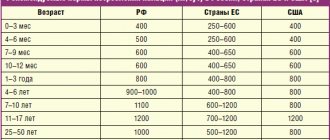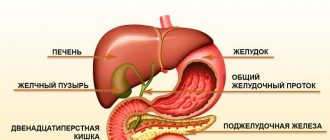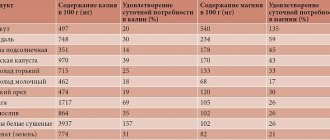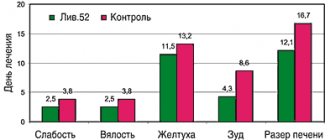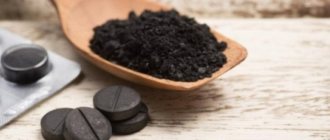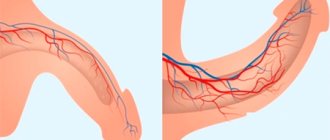Allergy medications: how do they work?
With the beginning of flowering, antiallergic drugs become one of the most relevant seasonal medicines. After watching commercials, many victims rush to the pharmacy in full confidence that the popular remedy will certainly bring them freedom from hay fever. However, in reality, everything is not so simple: antiallergic drugs vary both in the mechanism of action and in the time of onset of the effect and its strength.
Unexpected reaction
Normally, we breathe air saturated with the aromas of alder, birch, willow, maple and many other trees and plants, enjoying the smell of spring and awakening nature. However, for approximately every fifth person on earth, pollen entering the respiratory tract causes a complex cascade of pathological reactions.
This happens because the body of allergy sufferers perceives the substance that is part of pollen (antigen) as an enemy, to whom a brutal war of defeat is immediately declared. At its initial stage, special antibodies are produced - class E immunoglobulins. They must contact the antigen and neutralize it. But in fact, antibodies first attach to special, mast cells, which are very rich in the mucous membrane of the nasal cavity and respiratory tract.
When pollen antigens do bind to antibodies, mast cells are destroyed and their contents are released into the surrounding tissue: histamine and some other substances. They are the ones that cause the characteristic allergy symptoms that antiallergic drugs are designed to combat. In what ways do they achieve the desired effect?
Option one: don’t give histamine a chance
Antihistamines work on this principle. They block special H1-histamine receptors to which histamine binds, and thereby prevent its harmful effects. There are three generations of antihistamines.
To the first generation
include Diazolin, Tavegil, Suprastin, Fenkarol and many others. Their common distinguishing feature is a sedative, i.e. sedative, effect. First generation drugs, which are available in the form of injections (Suprastin and Tavegil), turn out to be indispensable in emergency situations, for example, with Quincke's edema, since they begin to act much faster than tablets.
More modern second generation
(Loratadine, Semprex, Ebastine) in recommended dosages are well tolerated without causing sedation, but may have a negative effect on the heart muscle1.
the third generation antihistamines are considered the most well tolerated and powerful.
- Cetirizine, Levocetirizine and Fexofenadine.
When taking antihistamines, you should remember that they do not allow newly released portions of histamine to bind to the receptors, while the substance released before the first dose of medication has long been associated with them and can still exhibit its destructive power. That is why significant relief sometimes comes after a few days of constant use of drugs, when the histamine that has managed to cause trouble has already exhausted its capabilities.
Choosing an antihistamine: a pharmacologist's view
For citation. Kareva E.N. Choosing an antihistamine: a pharmacologist’s view // RMJ. 2021. No. 12. pp. 811–816.
Antihistamines (AGDs) are the first line of treatment for most allergic diseases.
They are predominantly over-the-counter products; they have long been firmly established in our practice and have been used for more than half a century. Often the choice of these drugs is carried out empirically or even left to the patients, but there are many nuances that determine how effective a particular drug will be for a particular patient, which means that the choice of these drugs must be approached no less responsibly than, for example, the choice antibiotics. Each specialist in his clinical practice has probably encountered situations when a particular drug did not have the desired clinical effect or caused hyperergic reactions. What does this depend on and how can you minimize the risks? Variability in response to a drug is most often associated with the activity of metabolic enzymes in the patient’s liver; the situation is aggravated in the case of polypharmacy (5 or more prescribed drugs at the same time). Therefore, one of the real ways to reduce the risk of an inadequate response of the body to a drug is to choose a drug that is not metabolized in the liver. In addition, when choosing an antihypertensive, it is important to evaluate the following parameters: the strength and speed of onset of the effect, the possibility of long-term use, the benefit/risk ratio (efficacy/safety), ease of use, the possibility of use for concomitant pathology in combination with other drugs in a given patient, the route of elimination , need for dose titration, price. To solve this problem, consider the current information on histamine and antihistamines. Histamine and its role in the body
Histamine in the human body performs a number of physiological functions, plays the role of a neurotransmitter and is involved in many pathobiological processes (Fig. 1).
The main depot of histamine in the body is mast cells and basophils, where it is found in the form of granules in a bound state. The largest number of mast cells are localized in the skin, mucous membranes of the bronchi and intestines. Histamine realizes its activity exclusively through its own receptors. Modern ideas about the functional load of histamine receptors, their localization and mechanisms of intracellular signaling are shown in Table 1.
In addition to physiological functions, histamine is involved in the development of an inflammatory process of any nature. Histamine causes itching, sneezing and stimulates secretion of the nasal mucosa (rhinorrhea), contraction of smooth muscles of the bronchi and intestines, tissue hyperemia, dilatation of small blood vessels, increased vascular permeability to water, proteins, neutrophils, and the formation of inflammatory edema (nasal congestion). Not only with allergic diseases, but also with any pathological processes with a pronounced inflammatory component, the level of histamine in the body is always increased. This is indicated for chronic infectious and inflammatory diseases of the respiratory and urogenital tracts, acute respiratory viral infections, and influenza [1–3]. Moreover, the daily amount of histamine in urine during influenza is approximately the same as during exacerbation of allergic diseases. Therefore, a pathogenetically justified and clinically useful step is to reduce the activity of the histamine system in conditions of its increased activity. In principle, the histaminergic activity of the body can be suppressed either through a decrease in the amount of free histamine (inhibition of synthesis, activation of metabolism, inhibition of release from the depot), or through blockade of histamine receptor signals. In clinical practice, drugs have been used that stabilize mast cell membranes, thereby preventing the release of histamine. However, when using them, you have to wait a long time for the desired effect to occur, and the therapeutic effectiveness of this group of drugs is very moderate, so they are used exclusively for prophylactic purposes. A quick and pronounced effect is achieved when using antihistamines.
Classification of antihistamines
According to the classification adopted by the European Academy of Allergists and Clinical Immunologists, all antihistamines are divided into 2 generations depending on their effect on the central nervous system.
First-generation antihistamines
H1-antagonists of the first generation penetrate the blood-brain barrier (BBB) and can both stimulate and suppress the functioning of the central nervous system (Fig. 2). As a rule, the latter happens in most patients. A sedative effect when taking first generation AGPs is subjectively noted by 40–80% of patients. The lack of sedative effect in individual patients does not exclude the objective negative impact of these drugs on cognitive functions, which patients may not pay attention to (ability to drive, learn, etc.). Dysfunction of the central nervous system is observed even when using minimal doses of these drugs. The effect of first-generation antihypertensive drugs on the central nervous system is the same as when using alcohol and sedatives. Stimulation has been observed in some patients receiving conventional doses of antihypertensives and is manifested by restlessness, nervousness and insomnia. Typically, central excitation is characteristic of an overdose of first generation AGPs; it can lead to convulsions, especially in children.
When taking AGP of the first generation, in addition to the sedative effect and effect on cognitive functions, the following are observed: • short-term effect (forced use 3-4 times a day); • rapid development of tachyphylaxis (it is necessary to change the drug every 7–10 days); • low selectivity of action: in addition to histamine H1 receptors, they block acetylcholine, adrenaline, serotonin, dopamine receptors and ion channels, causing many side effects: tachycardia, dry mucous membranes, increased sputum viscosity. They can increase intraocular pressure, interfere with urination, cause stomach pain, constipation, nausea, vomiting, and increase body weight [4, 5]. That is why these drugs have a number of serious restrictions for use among patients with glaucoma, benign prostatic hyperplasia, cardiovascular pathology, etc. In acute poisoning of first generation AGPs, their central effects pose the greatest danger: the patient experiences agitation, hallucinations, ataxia, incoordination, convulsions, etc. Fixed, dilated pupils on a flushed face, together with sinus tachycardia, urinary retention, dry mouth and fever are very similar to signs of atropine poisoning. In children with an overdose of first-generation antihypertensive drugs, agitation and convulsions may occur, so experts in many countries are calling for the refusal of this group of drugs in the treatment of children or their use under strict supervision. In addition, sedation can impair children's learning and performance at school.
II generation antihistamines
New AGPs (II generation) do not penetrate the BBB and do not have a sedative effect (Fig. 2). Note: III generation drugs have not yet been developed. Some pharmaceutical companies present new drugs that have appeared on the pharmaceutical market as AGP III - the newest generation. They tried to classify metabolites and stereoisomers of modern AGPs as the third generation. However, it is currently believed that these drugs belong to the second generation AGPs, since there is no significant difference between them. According to the Consensus on Antihistamines, it was decided to reserve the name “third generation” to designate antihistamines synthesized in the future, which will differ from known compounds in a number of basic characteristics. Unlike older drugs, II generation AGPs practically do not penetrate the BBB and do not cause a sedative effect, so they can be recommended to drivers, people whose work requires concentration, schoolchildren and students. The term “practically” is used here, because in very rare cases and when taking second-generation drugs, cases of sedation are possible, but this is rather an exception to the rule and depends on the individual characteristics of the patient. Second-generation antihypertensives are capable of selectively blocking H1 receptors, quickly providing a clinical effect with a long-lasting effect (for 24 hours), and, as a rule, are not addictive (no tachyphylaxis). Due to their higher safety profile, they are preferred for elderly patients (over 65 years of age).
Antihistamines of the 2nd generation
Pharmacokinetic features Metabolism of AGPs of the 2nd generation
All AGPs of the 2nd generation are divided into 2 large groups, depending on the need for metabolic activation in the liver (Fig. 3).
The need for metabolic activation in the liver is associated with a number of problems, the main of which are the danger of drug interactions and the late onset of the maximum therapeutic effect of the drug. Concomitant use of two or more drugs that are metabolized by the liver may result in changes in the concentration of each drug. In the case of parallel use of an inducer of drug metabolism enzymes (barbiturates, ethanol, St. John's wort, etc.), the rate of antihistamine metabolism increases, the concentration decreases and the effect is not achieved or is weakly expressed. With the simultaneous use of liver enzyme inhibitors (antifungal azoles, grapefruit juice, etc.), the metabolic rate of AGP slows down, which causes an increase in blood levels and an increase in the frequency and severity of side effects. The most successful option for antihypertensive drugs are drugs that are not metabolized in the liver, the effectiveness of which does not depend on concomitant therapy, and the maximum concentration is achieved in the shortest possible time, which ensures a rapid onset of action. An example of such a second-generation antihypertensive drug is cetirizine.
The speed of onset of the effect of AGP of the second generation
One of the most important aspects of the drug’s action is the speed of onset of the effect. Among the second generation AGPs, the shortest period of achieving Cmax was observed for cetirizine and levocetirizine. It should be noted that the antihistamine effect begins to develop much earlier and is minimal for drugs that do not require prior activation in the liver, for example, cetirizine - after 20 minutes (Table 2).
Distribution of II generation AGP
The next most important characteristic of a drug is the volume of distribution. This indicator indicates the predominant localization of the drug: in plasma, intercellular space or inside cells. The higher this indicator, the more the drug enters the tissues and inside the cells. The small volume of distribution indicates that the drug is predominantly located in the vascular bed (Fig. 4). For AGP, localization in the bloodstream is optimal because its main target cells (immunocompetent blood cells and vascular endothelium) are represented here.
The values of the volume of distribution (liter/kg) for II generation AGPs are as follows in increasing order: cetirizine (0.5) < fexofenadine (5.4–5.8) < desloratadine (49) < ebastine (100) < loratadine (119) (Fig. . 5). The small volume of distribution ensures: a) high concentrations of this AGP on the surface of target cells, therefore, precisely targeted action and high therapeutic efficacy; b) lack of accumulation in parenchymal organs and safety of use.
Features of pharmacodynamics
The pharmacological effects of antihypertensive drugs are mediated by histamine receptors, selectivity for different subtypes, the strength and duration of binding to which varies between drugs. A distinctive characteristic of the second generation AGP cetirizine is its high affinity - the ability to bind histamine H1 receptors for a long time: their occupancy 4 hours after taking the drug is 90%, after 24 hours - 57%, which exceeds similar indicators of other AGPs. The most important property of antihistamines is their ability to reduce the expression of histamine H1 receptors, thereby reducing the sensitivity of tissues to histamine [8, 9]. According to the strength of the antihistamine effect, second-generation antihistamines can be arranged in the following order: cetirizine >> ebastine > fexofenadine >> loratadine (Fig. 6) [10].
The antiallergic effect of individual antihypertensive drugs (cetirizine) includes the so-called additional, extra-H1-receptor effect, together with which the anti-inflammatory effect of the drug is realized. Side effects of AGP
Side effects of antihypertensive drugs include anticholinergic effects (dry mouth, sinus tachycardia, constipation, urinary retention, blurred vision), adrenolytic effects (hypotension, reflex tachycardia, anxiety), antiserotonin (increased appetite), central antihistamine effects (sedation, increased appetite), blockade potassium channels in the heart (ventricular arrhythmia, QT prolongation) [11]. The selectivity of the action of drugs on target receptors and the ability to penetrate or not penetrate the BBB determine their effectiveness and safety [12]. Among the second generation AGPs, the drugs cetirizine and levocetirizine have the lowest affinity for M-cholinergic receptors, and therefore an almost complete absence of anticholinergic action (Table 3) [13].
Some antihypertensive drugs that can cause AR are terfenadine and astemizole. Due to the ability to cause a potentially fatal arrhythmia - atrial fibrillation (metabolic disturbance due to liver disease or in the presence of CYP3A4 inhibitors), terfenadine and astemizole have been prohibited for use since 1998 and 1999. respectively. Among the currently available antihypertensive drugs, ebastine and rupatadine have cardiotoxicity and are not recommended for use in persons with a prolonged QT interval or hypokalemia. Cardiotoxicity increases when taken simultaneously with drugs that prolong the QT interval - macrolides, antifungals, calcium channel blockers, antidepressants, fluoroquinolones.
Cetirizine
Cetirizine occupies a special place among second generation drugs.
Along with all the advantages of non-sedating antihistamines, cetirizine demonstrates properties that distinguish it from a number of new generation drugs and ensure its high clinical efficacy and safety [5, 14]. In particular, it has additional antiallergic activity, a rapid onset of effect, and there is no risk of interaction with other drugs and food, which opens up the possibility of safely prescribing the drug to patients with concomitant diseases. The effect of cetirizine consists of its influence on both phases of allergic inflammation. The antiallergic effect includes the so-called extra-H1 receptor effect: inhibition of the release of leukotrienes, prostaglandins in the nasal mucosa, skin, bronchi, stabilization of mast cell membranes, inhibition of eosinophil migration and platelet aggregation, suppression of ICAM-1 expression by epithelial cells [7, 15] . Many authors, both foreign and domestic, consider cetirizine to be the standard of modern AGP. It is one of the most studied antihypertensive drugs, having proven its effectiveness and safety in many clinical studies. For patients who respond poorly to other antihypertensive drugs, cetirizine is recommended [16]. Cetirizine fully meets the requirements for modern antihypertensive drugs [17]. Cetirizine is characterized by a half-life of 7–11 hours, the duration of the effect is 24 hours, after a course of treatment the effect lasts up to 3 days, with long-term use – up to 110 weeks, no addiction is observed. The duration of the effect of cetirizine (24 hours) is explained by the fact that the effect of AGP is determined not only by the plasma concentration, but also by the degree of binding to plasma proteins and receptors. Cetirizine is practically not metabolized in the liver and is excreted primarily by the kidneys, so it can be used even in patients with impaired liver function. But for patients with renal failure, a dose adjustment of the drug is required. Cetrin is an effective, high-quality generic cetirizine at an affordable price.
Currently, cetirizine preparations, in addition to the original (Zyrtec), are registered with 13 generic drugs from different manufacturers [18]. The relevant issue is the interchangeability of generic cetirizine, their therapeutic equivalence to the original drug and the choice of the optimal drug for the treatment of allergic diseases. The stability of the therapeutic effect and the therapeutic activity of the reproduced drug are determined by the features of the technology, the quality of the active substances and the range of excipients. The quality of drug substances from different manufacturers may vary significantly. Any change in the composition of excipients may be accompanied by pharmacokinetic deviations (decreased bioavailability and the occurrence of side effects) [18]. The generic must be safe to use and equivalent to the original drug. Two drugs are considered bioequivalent (pharmacokinetically equivalent) if, after administration by the same route (for example, orally) in the same dose and schedule, they have the same bioavailability (the proportion of the drug that enters the bloodstream), the time to reach the maximum concentration and the level of this concentration in the blood, half-life and area under the time-concentration curve. The listed properties are necessary for the proper effectiveness and safety of the drug. According to the recommendations of the World Health Organization, the bioequivalence of a generic drug should be determined in relation to the officially registered original drug. Bioequivalence studies have become mandatory for drug registration since 2010. The FDA (Food and Drug Administration, USA) annually issues and publishes the “Orange Book” with a list of drugs (and their manufacturers) that are considered therapeutic. equivalent to the original ones. In addition, it is important to pay attention to compliance with international manufacturing standards (GMP) when manufacturing drugs. Unfortunately, not all manufacturers (especially domestic ones) have production facilities that meet GMP requirements, and this may affect the quality of drugs, and therefore the effectiveness and safety of generics. Thus, when choosing generics, there are a number of reliable guidelines: the authority of the manufacturer, compliance with GMP, inclusion in the FDA Orange Book [19]. All of the above criteria are fully met by the drug Cetrin from Dr. Reddy's Laboratories Ltd. Cetrin is produced by an international pharmaceutical company whose production sites are GMP certified. It is bioequivalent to the original drug [20] and is included in the FDA Orange Book as a drug with proven therapeutic equivalence. In addition, Cetrin has a long-term successful experience of use in Russia and a large own evidence base. A comparative study of the therapeutic efficacy and pharmacoeconomics of cetirizine preparations from different manufacturers in the treatment of chronic urticaria showed that the largest number of patients who achieved remission were in the groups receiving Zyrtec and Cetrin, while the best results in terms of cost-effectiveness were demonstrated by therapy with Cetrin [21, 22 ]. The long history of use of Cetrin in domestic clinical practice has proven its high therapeutic effectiveness and safety. Cetrin is a drug that meets the practical need of clinical medicine for an effective and safe antihistamine drug available to a wide range of patients.
Cromoglycic acid - “non-emergency” antiallergic help
Cromoglicic acid and its derivatives stabilize mast cell membranes, preventing the opening of calcium channels and the release of calcium into mast cells. Thanks to this, the degranulation of mast cells is inhibited, which prevents the release of histamine, leukotrienes and other biologically active substances that mediate allergic inflammation.
An important aspect that concerns all cromoglycates is the slow onset of clinical effect. In this regard, it is more advisable to use them for the prevention of hay fever, rather than for its treatment.
For allergic reactions, cromoglycic acid preparations are used in the form of nasal spray and eye drops.
Cromoglycates, as well as other new generation allergy drugs, have a strong evidence base confirming their effectiveness and high safety profile [5].
Most cromoglycic acid drugs belong to the OTC group. But there are also exceptions. Thus, some eye drops are dispensed by prescription from a doctor, therefore, when offering TN to the buyer, it is important to study the instructions and clarify which group a particular drug belongs to.
Nasal spray
can be recommended for the treatment and prevention of hay fever in adults and children over 5 years of age. The therapeutic effect develops after several days or even weeks of constant use of the drug. On average, the course of treatment lasts 4 weeks, and drug withdrawal should be carried out gradually, over another 7 days [2].
Eye drops
, like the nasal spray, exhibit a noticeable therapeutic effect only a few days after the start of use. Prescribed to relieve the symptoms of allergic conjunctivitis in adults and children over 4 years of age.
What should I warn the client about?
After the therapeutic effect is achieved, you can reduce the dose of both the nasal spray and nasal drops, using them only when in contact with allergens, such as pollen. Do not forget to talk about the need for slow withdrawal of cromoglycic acid medications.
«
Active metabolites of 2nd generation drugs
There are absolutely modern developments that are practically devoid of the disadvantages of allergy medications of previous generations. They do not affect the heart and central nervous system, do not suppress mental reactions, and are not addictive.
These drugs include fexofenadine and desloratadine. The first is indicated for seasonal allergic rhinitis and chronic urticaria, it prevents the release of histamine and the development of reactions to the allergen. In this case, the effect begins approximately 1 hour after taking the dose and lasts up to a day. The second drug is prescribed for allergic rhinitis and urticaria. It blocks the release of biologically active allergy factors and prevents symptoms of the disease. Relieves spasm, reduces swelling and itching, normalizes capillary permeability. The effect appears relatively quickly, within about 30 minutes after dosing, and lasts up to 24 hours.
Allergies get ready!
First, let's find out what contributes to the development of an allergic reaction.
What can cause us to experience sudden itching of the skin, swelling of the mucous membrane of the respiratory tract, abdominal pain and other manifestations of acute allergies? The reason for this is the release of histamine, a mediator that is released in response to an allergen. Therefore, in the fight against allergy symptoms, taking drugs that block histamine receptors, reducing its effect on the body, plays an important role. They are called antihistamines. There are two generations of antihistamine drugs.1, 2 Let's look at them in more detail.
Antihistamines and the stomach
Histamine itself activates the production of gastric juice. Therefore, there is an opinion that blocking it inhibits secretion. This is not entirely true. H1 blockers are used to relieve symptoms of an allergic reaction. H2 blockers can reduce the production of gastric juice:
- Cimetidine;
- Ranitidine;
- Famotidine;
- Roxatidine.
This is another group of antihistamines used to treat gastritis, gastric ulcers, and reflux esophagitis. Allergy sufferers do not use them. Therefore, there is no risk of disrupting digestion in an attempt to combat hives or conjunctivitis.
